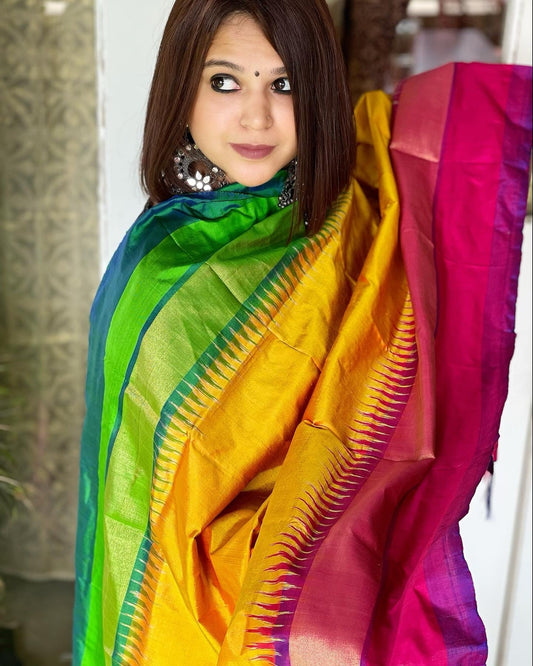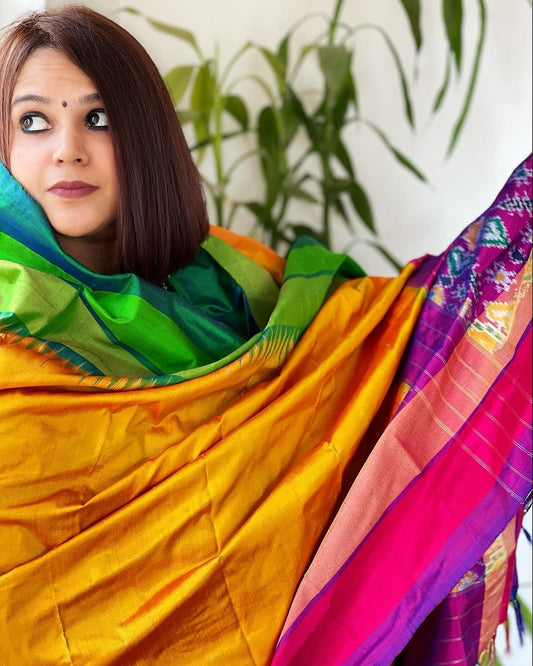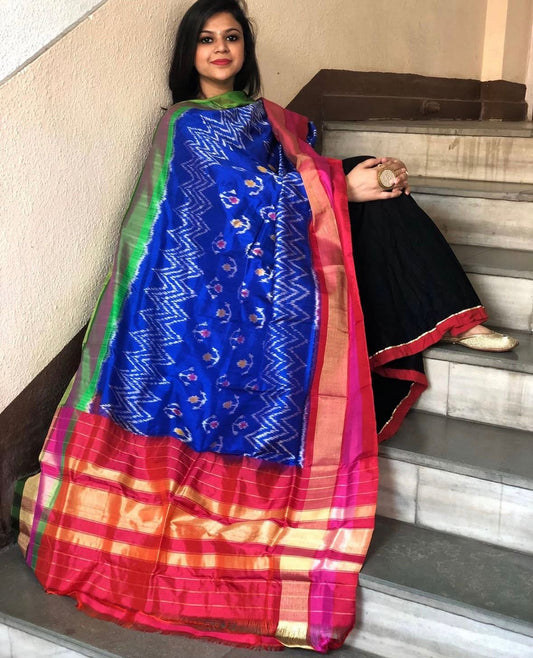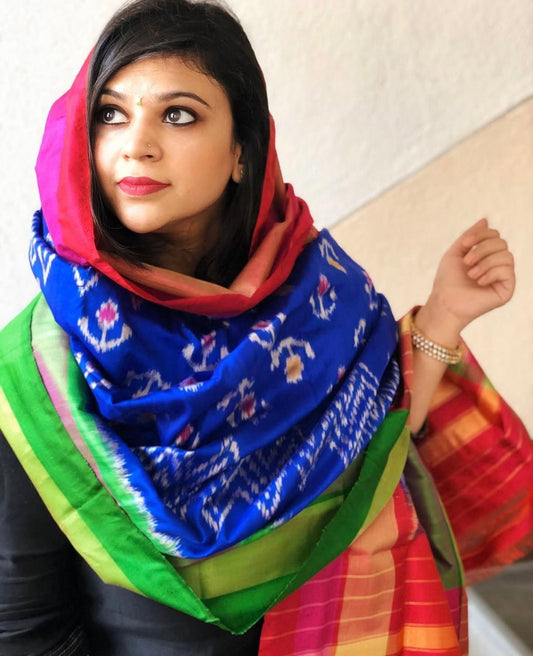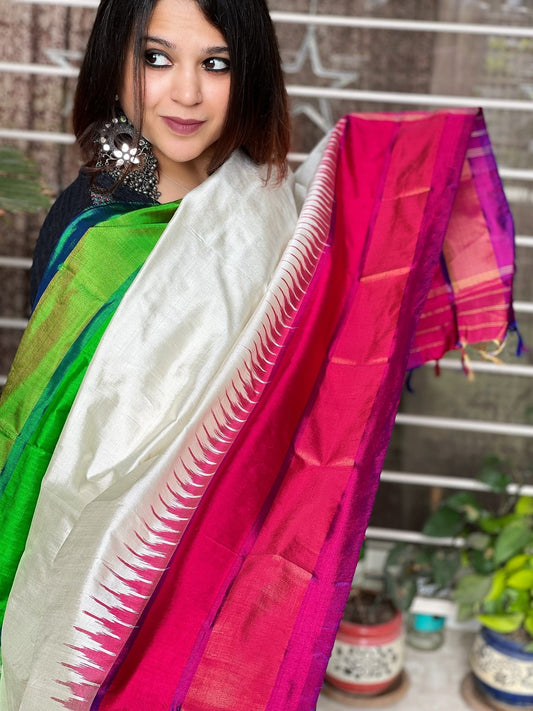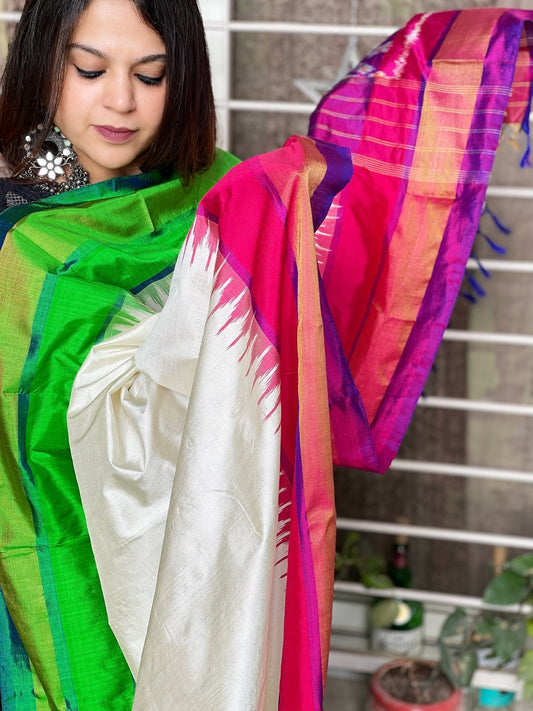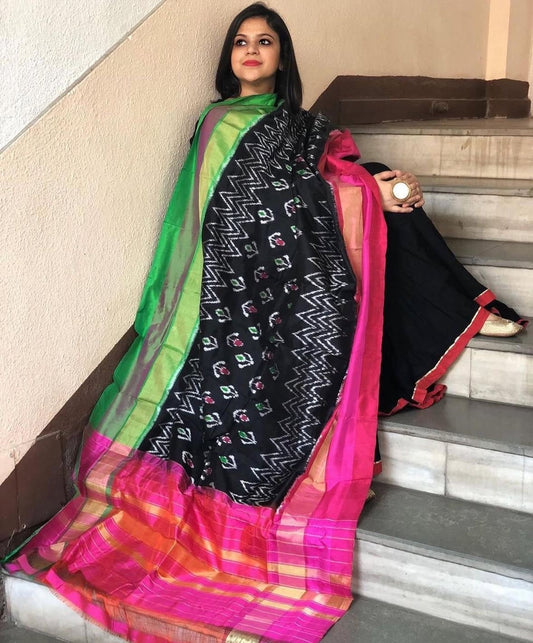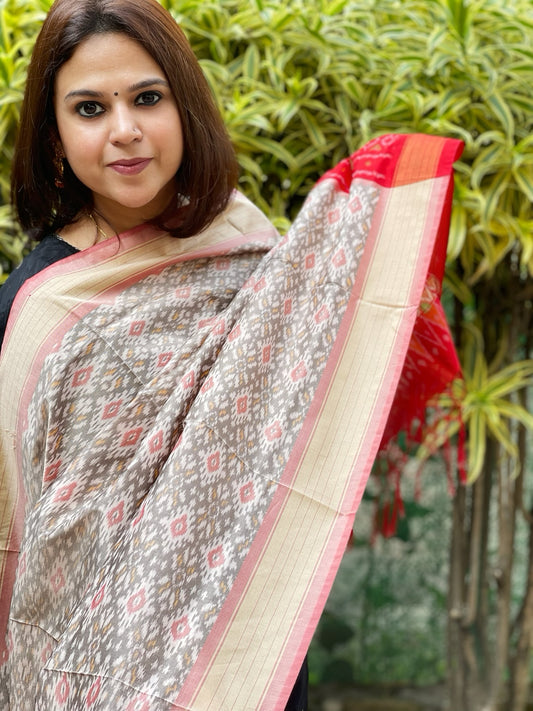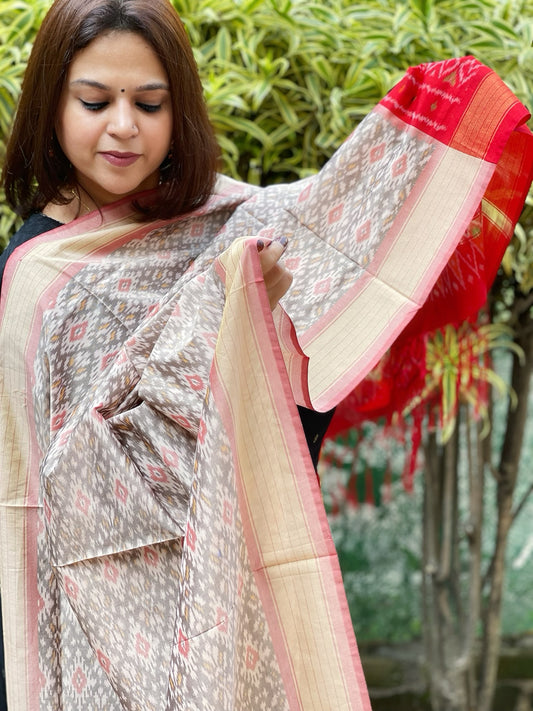Fixing Common Imperfections in Gajji Silk Bandhani Dupatta After Purchase
Gajji Silk Bandhani Dupattas are a radiant expression of India's vibrant textile heritage. These beautiful fabrics, rich with colours and intricate patterns, are beloved for their unique style that captures both tradition and elegance. Their dynamic patterns and rich textures make them a treasured piece in any wardrobe. However, as with any handcrafted item, imperfections might occasionally make their way into the finished product, presenting challenges for new owners. Understanding and fixing these common imperfections can be part of appreciating the true craftsmanship and quality of your dupatta.
Owning a Gajji Silk Bandhani Dupatta means you're holding a piece of art steeped in history. But just like any artwork, it may come with its quirks—tiny marks of its journey from artisan to you. These can include slight dye runs, minor snags, or uneven patterns. Luckily, these small issues can often be remedied with a little care and attention, allowing you to fully enjoy the beauty and distinctive charm of these pieces. Let’s explore the origins and the making of Gajji Silk Bandhani Dupattas to better understand their uniqueness and why these imperfections occur.
Understanding Gajji Silk Bandhani Dupatta
The slow, careful process of creating a Gajji Silk Bandhani Dupatta means each one carries its own story. The word "Bandhani" comes from the Sanskrit word "bandh," which means to tie or bind, hinting at the technique used to create those famous dots and patterns. This artistry hails from the vibrant Indian state of Gujarat, a region renowned for its rich textile history and skilled artisans. With origins dating back centuries, the Bandhani craft is believed to have been practised long enough to see its evolution from a common printing method to an exquisite art form.
The production of these dupattas involves a meticulous tie-dye process. Artisans deftly tie small sections of fabric using thread to resist the dye, creating intricate patterns once the fabric is dipped into vibrant colours. There’s something magical about watching a plain piece of cloth transform into a masterpiece. The time, skill, and patience required mean each Gajji Silk Bandhani Dupatta is truly a laboured work of art.
The importance of this craft in Indian tradition cannot be overstated. It's not just fabric; it's a symbol of cultural heritage and artistry. They are often worn during celebrations and ceremonies, symbolising joy and prosperity. This deep cultural resonance makes these dupattas more than just a part of your outfit—they are a connection to history and tradition. They carry the weight of the past into the present, bringing with them stories of lives and hands that have shaped them.
Production Process From an Artisan’s Perspective
Creating a Gajji Silk Bandhani Dupatta is a task of love and artistry. From the moment a piece of silk is chosen, every step is done by hand. Skilled artisans spend hours, sometimes days, tying small knots all over the fabric. This technique, known as tie-dyeing, requires precision and a steady hand. Each tied spot of fabric resists the dye, so when the dupatta is finally dipped in dye, intricate patterns emerge that are unique to each piece.
The entire process is a testament to the dedication of the artisans involved. Here’s a glimpse into what goes into making a Gajji Silk Bandhani Dupatta:
- Fabric Selection: It all begins with choosing the right silk, which should be soft and durable.
- Tying: Small sections are tied off with thread. This part is time-consuming, as it involves creating exact patterns.
- Dyeing: The fabric is dyed multiple times for different colours, with each knot preventing dye from entering, thus creating designs.
- Drying and Unraveling: Once dyed, the fabric is dried, and the threads are carefully removed, revealing the intricate patterns.
Producing these dupattas requires significant effort and time. It's this dedication to perfection that occasionally leads to imperfections. Minor errors like dye bleeding or asymmetrical patterns can occur, but that’s part of the charm. Understanding this process helps you appreciate that each piece bears the mark of the artisan's journey, showcasing their skill and patience.
Common Imperfections in Gajji Silk Bandhani Dupattas
Despite the dedication that goes into making a Gajji Silk Bandhani Dupatta, minor imperfections can sometimes slip through. These can emerge due to the intricate processes involved. It's important to know what to look for:
- Slight dye variations: Sometimes, the dye may not spread evenly across the fabric, leading to patches of lighter or darker shades.
- Loose threads: With the meticulous tying and untying process, a few threads might remain untrimmed or come loose.
- Uneven patterns: The manual tying means that some patterns may not align perfectly, adding to the item’s unique charm.
These imperfections occur because each dupatta is handcrafted individually, showcasing the artisan's prowess and human touch. Instead of diminishing the value of your dupatta, these nuances reflect its authenticity and heritage.
Fixing Imperfections in Gajji Silk Bandhani Dupattas
Addressing these imperfections requires a gentle touch. Here are some practical solutions to restore your dupatta’s beauty:
- For dye variations, consider professional cleaning services specialising in delicate garments. They can often adjust the colour fastness.
- Trim loose threads carefully with small scissors. Be gentle to avoid disturbing the weave or main patterns.
- If the patterns appear uneven or distorted, gently steam the fabric. This can help balance out the uneven areas as the fabric relaxes.
While tackling these minor issues is often straightforward, significant imperfections may require professional repairs. Remember, taking your prized dupatta to those who understand its value and craftsmanship ensures it remains cherished for years to come. Regular care and mindful storage are also key to maintaining its brilliance. Keep your dupatta folded with tissue paper to preserve its shape and vibrancy over time.
Embrace the Beauty of Handmade Crafts
The unique notes and quirks found in handmade items like the Gajji Silk Bandhani Dupatta aren't just imperfections; they are the heartbeats of tradition. Each one tells a story of the skilled hands that created it and should be valued as part of its narrative. Appreciating these elements deepens your connection to the craft and the cultural history it represents.
Owning a Gajji Silk Bandhani Dupatta is much like owning a piece of a tapestry woven through time. It’s a vibrant reminder of the skilled artisans who keep these age-old techniques alive, handing down their knowledge through generations. By embracing any small imperfections, you cherish the skills, history, and traditions tied into your dupatta.
Celebrate the Heritage and Craftsmanship
Gajji Silk Bandhani Dupattas offer such depth in their beauty and craftsmanship. Reflecting on their origins and the immense skill involved helps cultivate a deeper appreciation for them. These dupattas are far more than fabric; they are storytellers of past and present artisans.
As you care for your dupatta and understand its journey, you can embrace the imperfections as an integral part of its charm. This awareness allows you to celebrate not just the completions but the beautiful process behind it. By valuing these crafts, you contribute to their continued legacy and keep vibrant traditions alive for future generations to admire and cherish.
Celebrate the charm and tradition found within each Gajji Silk Bandhani Dupatta. Experience the rich history and unique imperfections that make these pieces truly special. To explore a range of beautifully crafted dupattas that capture the essence of this timeless art form, visit Masakalee today. Each piece is a story waiting to be part of your journey.



